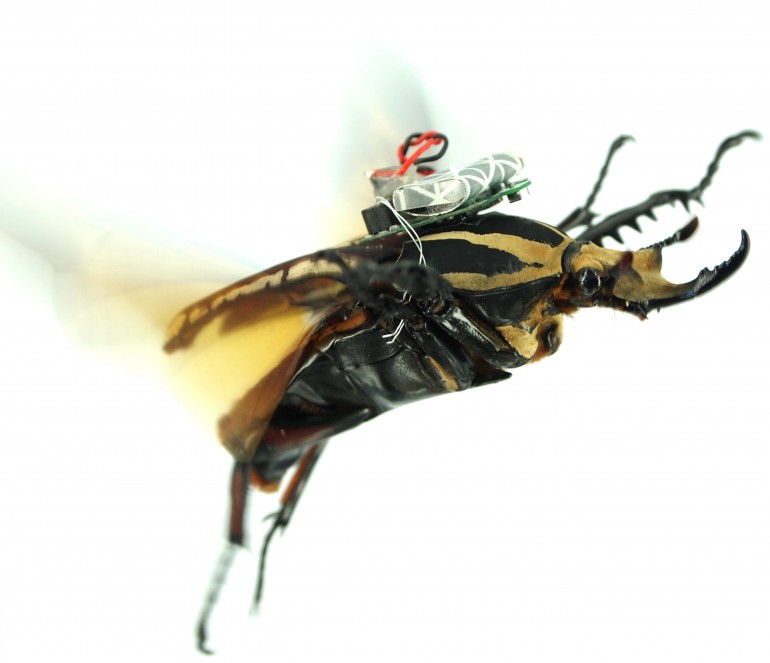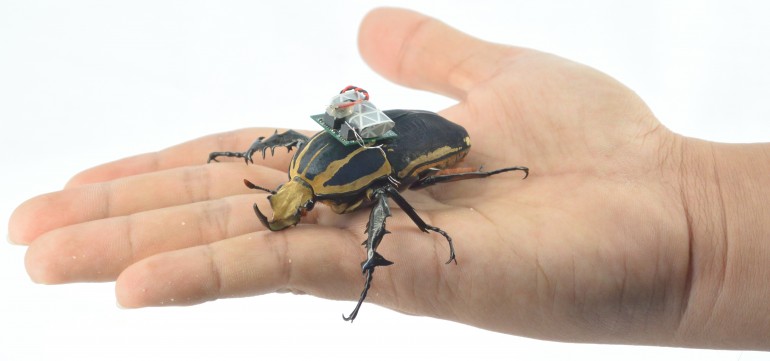
Remote-controlled cockroaches are thing of the past, practically considered peasantry by the remote-controlled insect community, if such a thing were to exist. Well, not really, but why settle for fooling around a repulsive, brown-colored terrestrial insect when instead, you can pilot a massive, colorful flying beetle? In a bid to study insect biology, scientists from UC Berkeley and Singapore’s Nanyang Technological University (NTU) have managed to successfully control a giant flower beetle (mecynorrhina torquata) in free flight after outfitting the creature with a radio-controlled electronic backpack.
The scope of the experiment was to study the role that the arthropod’s smaller muscles have on its ability to steer in flight, something that’s nearly impossible to study by traditional methods of tethering insects in place, as this is believed to affect the manner in which they fly.

The backpack used in the experiment consisted of a miniature, commercial-available microcontroller, a wireless receiver and transmitter, a 3.9 volt micro lithium battery, and six electrodes to be inserted in the beetle’s optic lopes and flight muscles. As for the beetle itself, the giant flower variant measures 6 cm in length and weighs 8 grams, effectively weighing as much as a dollar coin.
Once equipped with the device, determining which muscles are critical to steering was simply a matter of releasing the beetles in a closed room and allowing them to fly untethered while the electrodes recorded neuromuscular data before the transmitters broadcasted the data back to a computer. Armed with this information, the researchers were then able to selectively stimulate different muscles to make the beetles actively take off, turn left or right, or even hover mid-flight within a room equipped with eight 3D motion-capture cameras.
The experiment determined that the beetle’s coleopteran third axillary sclerite muscle is responsible for more than just folding the insect’s wings beneath the carapace plate, but also plays a critical role in the steering. As minute as this detail may otherwise seems, it’s worth noting that process involved in arriving to this outcome, that is, the application of wireless sensors in biological research, can used as jumping off point for developing tools that may aid in search-and-rescue endeavors. Consider for a moment the implications of sending in the cyborg insects to explore forbidden nooks and crannies in search of survivors. “We could easily add a small microphone and thermal sensors for applications in search-and-rescue missions,” explains Professor Hirotaka Sato.
The paper was published in the journal Current Biology where it can be viewed in its entirety. I for welcome the idea of remote-control insect drones. What better way to take selfies than with 6 cm bug behemoth orbiting near your face?
Source: Berkley.edu
Advertisement
Learn more about Electronic Products Magazine





